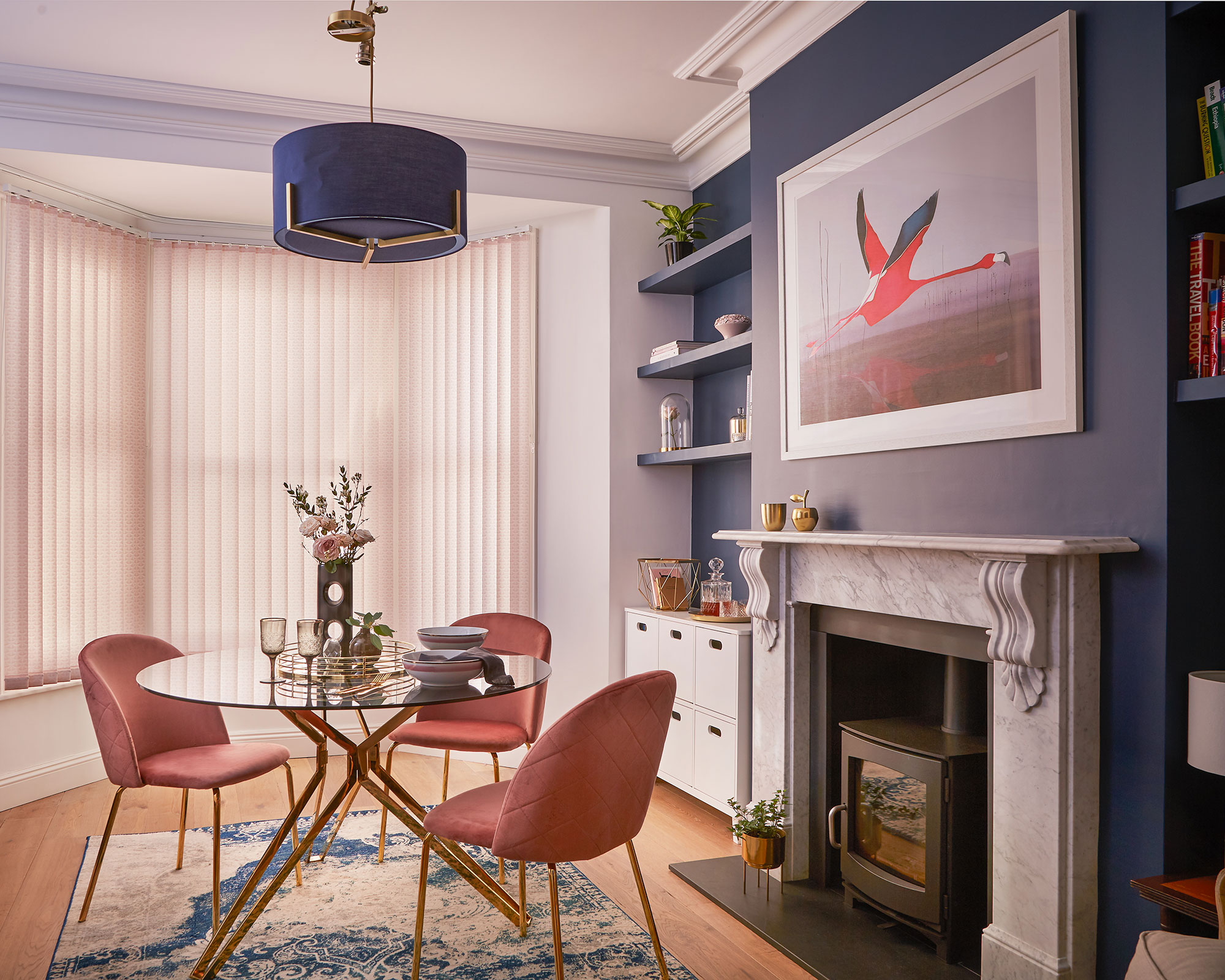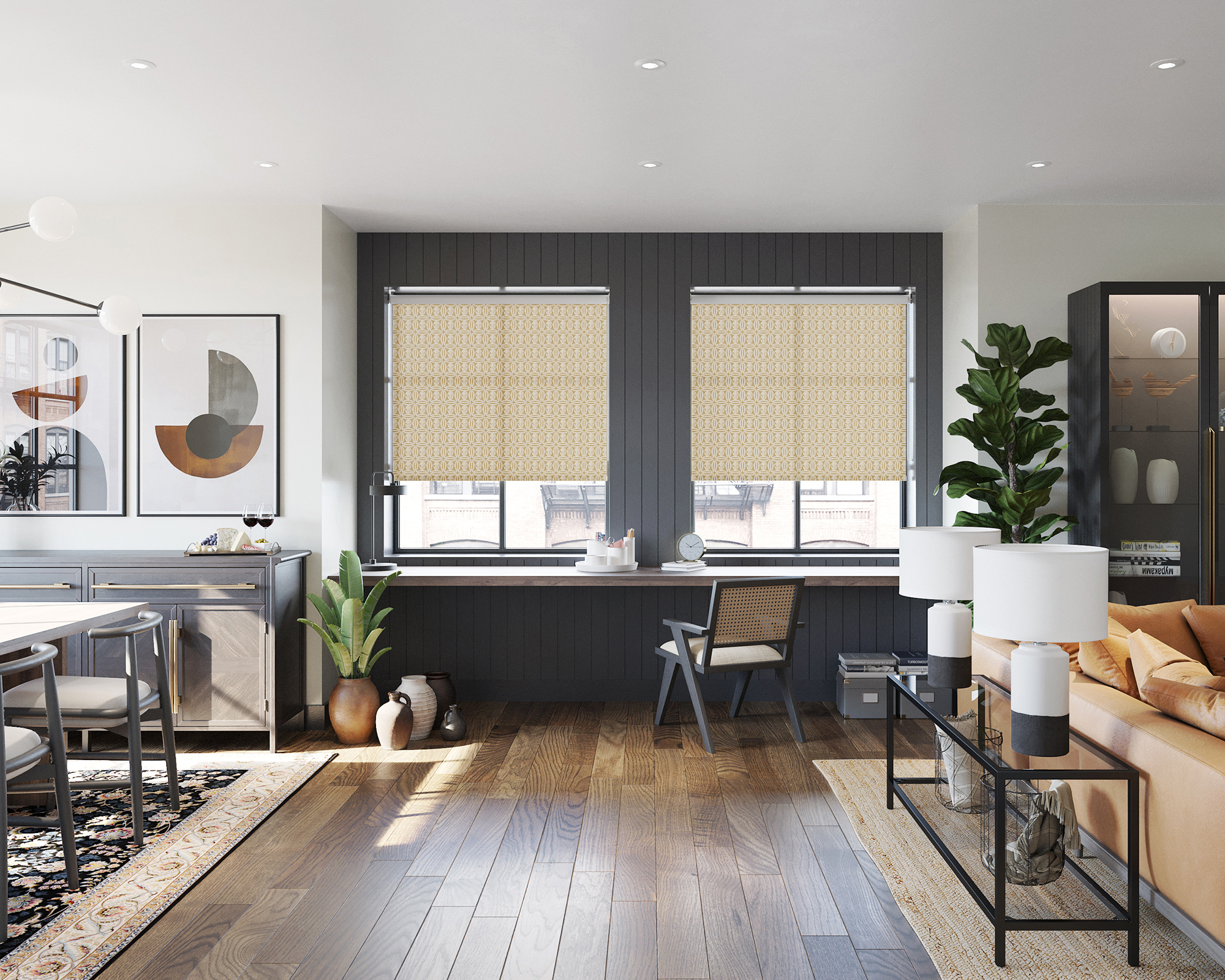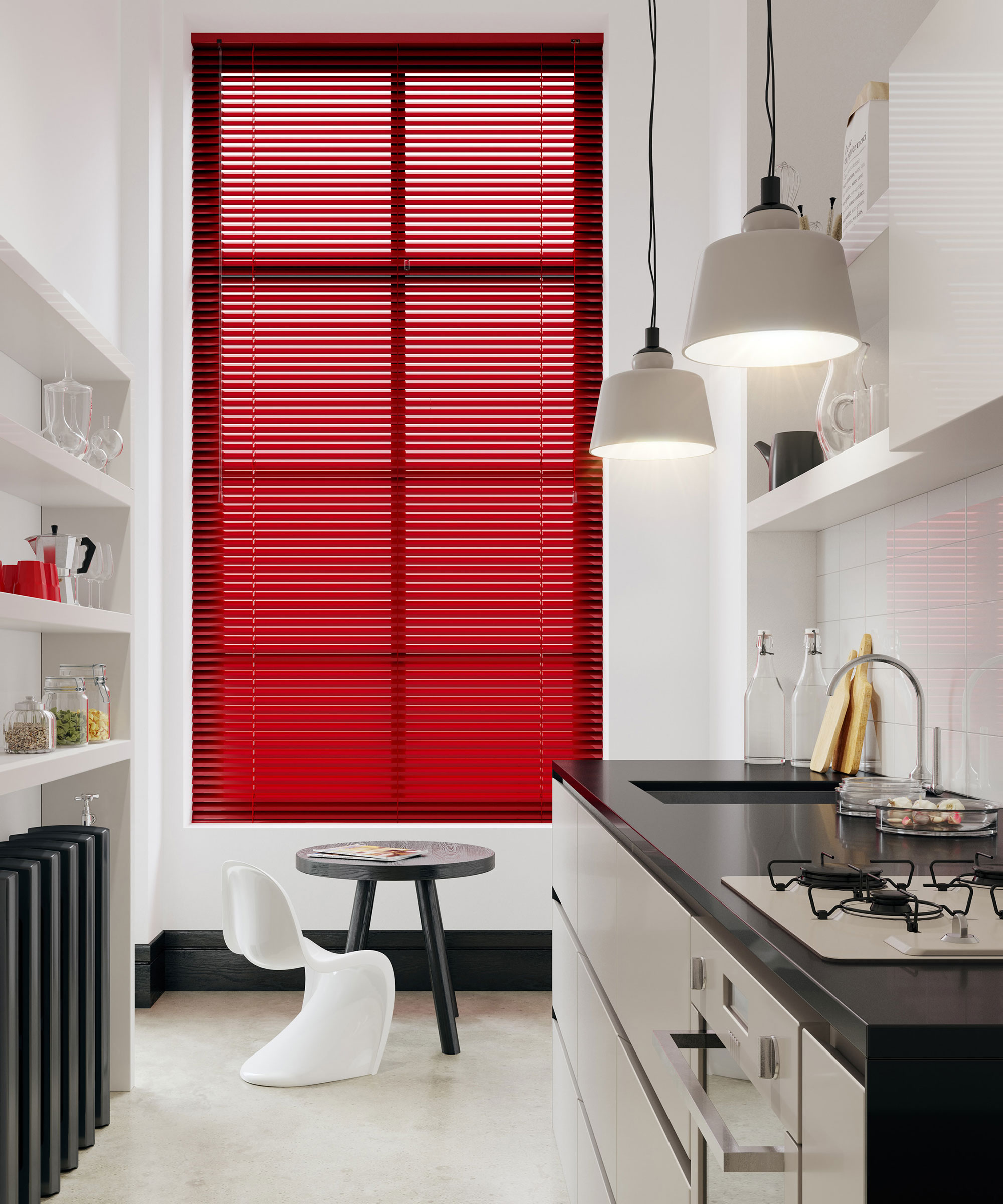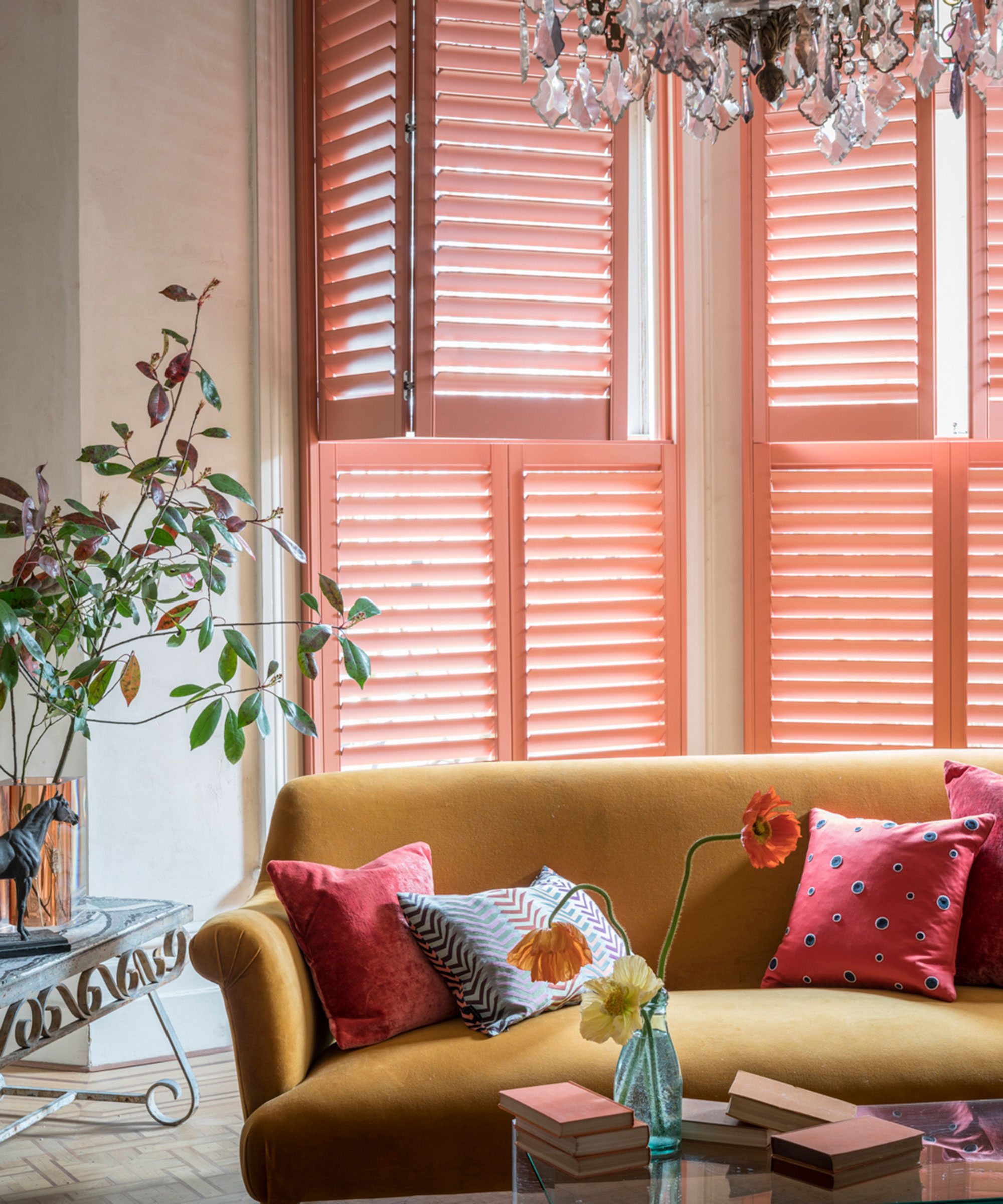How to clean blinds easily: remove dust from vertical, Venetian and Roman blinds
Know how to clean blinds quickly and easily? Dust and clean up your vertical, Venetian, Roman blinds and more – whether you want to use the bath tub or not

Knowing how to clean blinds isn't most people's number one skill, and it's a job that often gets overlooked too. However, blinds can oh-so-quickly become mucky and unsightly if they aren't given the attention they deserve.
Whether you're tackling dusty vertical blinds, seriously food-speckled roller blinds in your kitchen, grubby Venetians or another type of blind – mini blinds maybe – you'll be able to get them dust-free and clean in not so long at all, with minimum effort, of course. After all, if you've got super clean windows but dirty blinds, they are just going to let the side down.
Some like to wash their best blinds in a bathtub which is a great way to deep clean them. This is often needed, but we are big fans of fast and simple methods if we can help it, so staying on top of dusting and quick wipe downs is a must to make life simple. However you prefer to tackle yours, you're on the right path to wonderful-looking blinds in no time.
Here's how to clean blinds easily and naturally with cupboard staples and things you'll find lying around the house. And, on the rare occasion that none of these work, you can take a trip to your local dry cleaners...
How to clean blinds
The method you use will depend on what material your blinds are made from; whether you can easily remove them; what style they are; and how grimey they have become.
Read on for a range of solutions for clean and fresh blinds.
How often should you clean blinds?
Nayden Delchev, director at Cleaners of London, advises: 'Ideally, blinds need to be cleaned once a month as the dust that gathers can be harmful to ourselves and our families’ immune systems. If you live on a main road or have pets in the home you should consider cleaning them on a weekly or fortnightly basis due to smears and extra dust.'
Get small space home decor ideas, celeb inspiration, DIY tips and more, straight to your inbox!

How to clean vertical blinds
Vertical blinds are much easier to keep clean than fabric blinds, since dust is less likely to cling to certain manmade fabrics, such as PVC. A weekly dusting with a feather duster and a wipe over with a damp cloth (or even sock) should be all they need.
We had the pleasure of speaking with Jason Peterkin, director at 247 Blinds who says: 'The trusty feather duster is a regular household item and proves to be a useful tool for reaching all manner of dust-drenched spots. Simply start from the top and keep the surface of your blind flat. To remove dirt, move the duster along the surface of the blind whilst working your way down,'
Using a vacuum or even your best handheld vacuum with a fitted brush attachment is also a great way to pick up debris from blinds.
'Your vacuum cleaner is another great tool to tackle your lint-laden blinds. Brush your blind with your vacuum’s attachment, to achieve a gentle approach. No matter what material, be it aluminium or wooden, your blind will benefit from this type of soft brush nozzle. By doing this, you’ll maximize the chance of covering your whole blind and in turn minimize any danger or becoming damaged' says Peterkin.
As with all blinds, don't forget to gently vacuum or dust the headrail or pelmet, since dust will sit on it unseen.
How to deep clean blinds in a bathtub
As mentioned, if your blinds are really dirty, you could un-attach them and put them in a bath full of soapy, warm water. Lay a towel beneath Venetians especially so they don't scratch the bath, and after cleaning each slat with a soft brush or sponge, drain the bath and rinse off with the shower attachment.
Try to keep the headrail out of the bath so that you don't get the mechanisms wet. Allow to dry thoroughly before rehanging.
Peterkin says: 'If the dirt on your vinyl or aluminium blinds is persistent, you may need to turn to your bathtub,'
'To deep clean your blinds, place them in warm water and washing-up liquid and leave them to soak for an hour before rinsing and removing any excess dust or dirt with a cloth. Rubber ducks aside, a bubble-fuelled soak can be the deep-clean your blinds need.'

How to clean roller blinds
Roller blinds in a plain or pale-colored hue tend to show stains and marks more obviously than patterned or dark-colored roller blinds, so if you're shopping for roller blinds in the future, always look for ones made from a fabric that can be wiped clean for easier maintenance.
Whatever the fabric of a roller blind, regular cleaning will keep it in good condition. First open the blind fully. Then using the soft brush vacuum attachment and the lowest power setting, carefully vacuum in downwards, sweeping motions, keeping the brush attachment just off the blind's fabric, being careful not to pull at the fabric. Next, carefully wipe in a downwards motion from top to bottom with a just-damp cloth.
To remove stains from roller blinds, treat the fabric much like you would when cleaning upholstery, but stick to these general guidelines: use gentle products that won't leach color from the blind's fabric; experiment with any cleaning products first on the least seen part of the blind first; dab, don't rub, as this in itself can warp the fabric.
Use baby wipes to spot clean roller blinds
Choose the gentlest baby wipes you can find to carefully dab at the stain on the blind's fabric. Waterwipes, for example, have one of the simplest ingredients lists and are made with a 99.9% water formulation. Find them on Amazon.
Use upholstery wipes to clean roller blinds
Upholstery wipes (like Tub O' Towels Carpet & Upholstery Cleaning Wipes on Amazon) can be a good stain treatment; again, wipe gently and pick one that suits your blind's fabric.

How to clean Venetian blinds
Metal Venetian blinds are easy to clean but do get dusty – and when they do, it's really obvious. And, if the blinds are in a kitchen, that dust will soon turn to greasy grime, so it's really worth keeping on top of regular light cleaning to avoid having to do a thorough monthly clean.
For quick results, use your vacuum cleaner on a lower power setting, keeping the upholstery attachment just shy of the slats so that you don't damage them. Otherwise, the best approach is to once a week, close the Venetian blind and use a feather duster to give it a light dusting. Next, open and close the blind in the opposite direction to clean the other side of the slats. This will remove the majority of the dust, fast.
For a more thorough clean, dust with a Venetian blind cleaning tool – a natty piece of cleaning kit that will cut down how much time and effort you spend. Or, this is where an old sock really comes into its own.
Peterkin suggests 'Recycling an old sock to carry out your household chores. Similarly to the feather duster, the humble odd sock is another item that won’t be hard to find or to implement. Hold the blind slat between your fingers and thumb, covering both sides of it, and cover the other hand with your chosen sock. Sweep your hand over the surface of the blind and rid it of any dust whilst doing so. It’s a delicate process and lowers any risk of damaging your blind.'
Work from the middle of each slat outwards to minimise the spread of dust. Once dusted, use washing up liquid in hot water or a good quality window cleaning product to gently wipe the slats, being careful not to bow them. Dry with a lint-free cloth – microfiber cloths (available from Amazon) are the best. If your blinds are riddled with grease stains and the like, mix a tablespoon of baking soda into your dish soap solution.
How to clean wooden Venetian blinds
You can use the majority of the dry techniques above to clean wooden Venetian blinds. Unlike metal Venetians, those made from wood must not be overly wetted or dunked in water or the wood will warp and swell. You might also like to avoid using strong cleaning products on them, since this too can damage the finish. Instead, stick to using cleaning solutions that you'd apply to wooden furniture, or just use a slightly damp cloth to work off stains, and ensure blinds dry fully before retracting them.
As an alternative consider faux wooden Venetian blinds. James Chilton, product manager, Hillarys Blinds says: 'Faux wood blinds are a hardier alternative to their wooden counterparts,'
Durable and water-resistant, they wipe clean, will never warp so perfectly practical for humid rooms such as bathrooms, kitchens or conservatories.'

How to clean Roman blinds
Keep your Roman blinds looking good by cleaning them regularly in the following way. Open the blind fully, and vacuum using the same method as above for cleaning roller blinds. Concentrate on the bottom and sides of your Roman blinds if they brush the edges of the window sill and frame as they'll gather more dust over time.
Once they've been vacuumed, use a damp cloth, as above for cleaning roller blinds to remove excess dust and easy-to-remove stains.
You can try the methods above for removing more stubborn stains, but it's also worth using a fabric stain remover specific to your blind's material, following the manufacturer's instructions carefully. Ensure you test the products on an unseen part of the blind first to ensure color doesn't leach with application.
You could also try a spot cleaner – a small handheld carpet cleaner designed for spills and stains. This machine will tackle dirt that is hard to remove with a cloth, without overwetting the blinds. You may need to take the blinds down and clean them on a hard surface such as a stable or floor to make the job easier.
If stains are stubborn or the fabric the Roman blinds are made from suffers from color run, it may be best to have your blinds professionally dry cleaned once in a while. Check for a dry clean label before you go to the trouble of taking the blinds down – or failing that, take one blind down of a set and check the fabric is dry-cleanable.
Not sure what washing symbols to look out for? We've got you!
More ways to clean blinds easily
How to clean blinds with vinegar
Simply fill a small bucket or washing up bowl with a mixture of one part white vinegar and one part warm water, and then use a clean microfiber cloth (or your old sock) to wipe metal, PVC or painted surfaces carefully. Turn the blinds the other way and repeat. Allow to air dry; in doing so, the vinegary smell will disappear.
How to clean blinds quickly with a steam cleaner
In a hurry? The best steam cleaner is your best friend. Get it up and running and double check on an unseen part of the blind that the steam won't cause warping or discoloration of fabric. You'll need to allow the part of the blind you've tested to dry thoroughly to be sure. Once done, steam the blind's material to remove stains, grime and dust. Allow to dry before retracting. This method is especially useful for removing mold from blinds that are in a damp room – a bathroom, perhaps.
How to get nicotine stains and a smoke smell out of blinds
Inherited your house from a smoker? Even metal and wooden blinds and shutters can hold on to strong smells, which becomes ingrained in the dust on them. Baby wipes or upholstery wipes – or even a soapy cloth – should easily remove stains, too.
And for the smell, with fabric blinds, you'll want to try cleaning with baking soda. Simply remove the blinds, lay them out flat on the floor and sprinkle liberally with bicarbonate of soda. Allow to soak in for as long as possible – an hour minimum, overnight if possible – then shade off or very (very) gently vacuum the powder off and rehang. The smell should have disappeared.

How to clean interior window shutters
Cleaning window shutters can be approached much like cleaning Venetian blinds. If your shutters are wooden, take the same precautions as with wooden Venetians, keeping to dry or just-damp cleaning methods. If, however, they are painted or wood-effect plastic, you can be a little more gung-ho with your approach.
Wipes are good for removing finger marks and stains, but a soapy cloth will work just as well; a lint-free cloth in either case is handy for removing smudges the cleaning solutions leave behind and will give your shutters a decent shine. Shutter cleaning brushes are an ingenious way to cut down on cleaning time, and if you're not sure what sort of brush you'll need, this 8-piece set from Openfly is bound to do the job.

How to clean conservatory, glazed extension and loft roof blinds
Conservatory blinds tend to gather not just dust, but dead insects over the course of a summer. With this in mind, it's a good idea to clean them in spring and again around September/October. Doing so will keep them looking good, will ensure you're not showered with debris when you pull them back and forth, and will prolong the fabric's life.
Start by removing dust and debris from behind the fully-opened blinds, either with the upholstery attachment of your vacuum cleaner if you can reach behind them, or by blowing them out on to the floor with your hairdryer or leaf blower on a gentle setting. Either way, you'll want to move the furniture beneath while you're doing this, and get someone to hold on to a sturdy step ladder for you.
Next, gently vacuum the visible side of the blinds, being careful not to tug at the fabric; the vacuum needs to be on the lowest power setting and you should keep the upholstery attachment just shy of the blind. This will be step one if you're cleaning loft and glazed extension roof blinds.
If you're nervous of doing this (or can't reach), opt for a feather duster or slightly damp cloth, which can be wiped gently over the surface of the blinds' fabric. If you're opting for the former, this extendable and bendable buy from YVYV store on Amazon gets a thumbs up from us (and anyone else under 5ft 5).
Pro tips on how to clean blinds
Melissa Maker, author and creator of Clean My Space recommends, 'To make this job even easier the next time around, stay on top of your dusting. I always say mess begets mess, and dust, grime, and dirt definitely tend to compile, too. For this light in-between job, simply turn all the blinds upright and, working from the top, move your vacuum or duster in an S-pattern all the way to the bottom.'
Mrs Hinch UK-based cleaning guru, shares a super savvy way to dust blinds, 'The reason I use tumble dryer sheets is because they’re anti-static so they pick up all the dust. You don’t need to wet them or do anything,.. Once you’ve wiped every slat and all the dust is off, put a capful of neat Zoflora onto a sheet of kitchen roll folded into four, and rub this onto your blinds. It just leaves the Zoflora, heavenly.'
Peterkin notes to 'Never underestimate the power of a damp cloth: particularly for grease-stained blinds. Make sure it’s microfiber and soaked in warm water and some washing-up liquid, apply the cloth to the tough-to-clean residue and wipe away. If your blinds are wooden, be aware not to dampen your cloth too much, so as to avoid watermarks.'
Ivan Ivanov, spokesperson for cleaning company End of Tenancy London has a cool way to clean blinds. He says: 'If you have blinds that are made of a delicate material, put down the damp cloth or vacuum and instead invest in lint rollers. Designed primarily for clothing, lint rollers have a sticky outside that lends itself beautifully to removing dust. Just be cautious not to apply too much pressure to what you’re cleaning (such as a venetian blind) or else you run the risk of breaking it.'
Lynsey Crombie aka Lynsey Queen of Clean creates her own cleaning contraption by taking a microfiber cloth and wrapping it around a pair of kitchen tongs, using an elastic band to fasten. She gently clamps onto the slats using the utensil and rotates it horizontally, removing the dust with a side to side motion.
How to clean yellowed or discolored blinds
'Sunlight can take a toll on white blinds, turning them yellow over time,' warns Sarah Fishburne, head of trend and design, Home Depot.
'Once you’ve dusted and cleaned the blinds, you may be able to whiten them again.'
Here, she explains how you can remove any UV staining and have blinging blinds again:
- For plastic and aluminum blinds, fill your bathtub with cold water and 2 or 3 cups of liquid bleach. Take the blinds off the window and soak them in the bleach solution for about 10 minutes. Stay safe by opening your windows and running a fan to ensure good air circulation in your work area. NOTE: Follow any cleaning directions that come with your blinds. Some manufacturers recommend against submerging them in water, which may lead to rusting. Putting them under water may void your warranty. Don't use water on wood blinds.
- Put on rubber gloves and use a sponge to wipe off each slat with the bleach solution. Drain the tub, rinse the blinds and let any excess water drip off while you hold them over the tub.
- Hang the blinds outside to air dry or dry them with an old towel. Be careful not to get the bleach solution get on your skin, clothes or anything else. It’s a good idea to put some old towels under the blinds after you hang them up, in case they continue to drip.
- If you prefer, take the blinds outside and spray them with the bleach solution. Rinse them on both sides with a garden hose or pressure washer and hang them to air dry before you take them inside.
- To brighten yellow or discolored wooden blinds, dust them and leave them in place if you have only a few spots to work on. Use a wood cleaner or a wood polish to remove the spots.
- If the blinds are badly discolored, take them down and re-paint them outside using interior paint.

Lucy is Global Editor-in-Chief of Homes & Gardens having worked on numerous interiors and property titles. She was founding Editor of Channel 4’s 4Homes magazine, was Associate Editor at Ideal Home, before becoming Editor-in-Chief of Realhomes.com in 2018 then moving to Homes & Gardens in 2021. She has also written for Huffington Post, AOL, UKTV, MSN, House Beautiful, Good Homes, and many women’s titles. Find her writing about everything from buying and selling property, self build, DIY, design and consumer issues to gardening.

